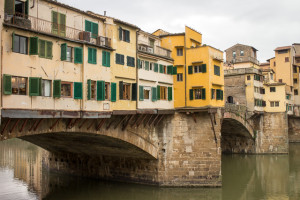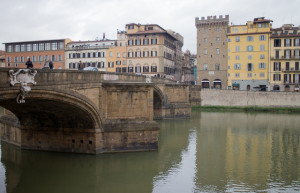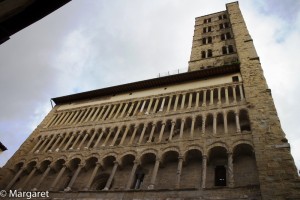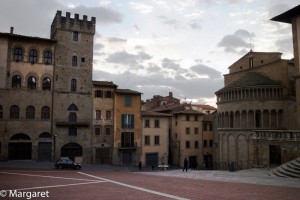I absolutely LOVED this Christmas video-experiment, and I am sure you will, too.
Just click on it and…enjoy! 🙂 http://goo.gl/W7sQ32
I absolutely LOVED this Christmas video-experiment, and I am sure you will, too.
Just click on it and…enjoy! 🙂 http://goo.gl/W7sQ32
First of all, I’d like to apologize to those of you who have written to me and are still waiting for a n answer. This last period has been hectic for me, and it’s just going to get “worse” next week…I mean, more hectic. Mostly, in a good sense, though! 🙂
n answer. This last period has been hectic for me, and it’s just going to get “worse” next week…I mean, more hectic. Mostly, in a good sense, though! 🙂
For example, I finally met the woman who founded the Italian MGUS support group on Facebook (we celebrated the group’s sixth year “birthday” just last week). I “met” her on Facebook when I joined the group, about five years ago. At a certain point she asked me if I would help her co-administer (is that even a verb? Hmmm) the group, which back then counted about 200 members (it now has 419 members!…and more co-administrators, too).  Anyway, throughout the years, she and I have stayed in touch in many ways–phone messages, emails, phone calls–but we’d never actually met “in the flesh” until two days ago, which is when she, her husband and adult son made a stop in Florence on their way back home from Rome to Trieste, where they live. And so we met. Finally.
Anyway, throughout the years, she and I have stayed in touch in many ways–phone messages, emails, phone calls–but we’d never actually met “in the flesh” until two days ago, which is when she, her husband and adult son made a stop in Florence on their way back home from Rome to Trieste, where they live. And so we met. Finally.
And what a wonderful meeting it was. Indeed! It didn’t feel as though we were meeting for the first time. No, it was like two old friends getting together after not having seen each other for quite a long time.
We chatted and chatted…and…chatted…for HOURS. Her husband and son were incredibly patient, I must say! 🙂
In the late afternoon I drove them to the Piazzale Michelangelo, a large square offering the most stunning panoramic views of Florence, especially at sunset, as you can see from my not-so-splendid photos below…
 A couple of cute things happened while we were at the Piazzale. Number 1) While we were admiring the views, we suddenly heard a small group of friends whooping and clapping right next to us. Soon the entire Piazzale was clapping, jumping, and screeching with joy. Everyone stopped doing what they were doing–taking selfies, mostly. What had happened, you ask? Well, a young man had just proposed to his girlfriend. And this happened right next to us. Such a happy moment.
A couple of cute things happened while we were at the Piazzale. Number 1) While we were admiring the views, we suddenly heard a small group of friends whooping and clapping right next to us. Soon the entire Piazzale was clapping, jumping, and screeching with joy. Everyone stopped doing what they were doing–taking selfies, mostly. What had happened, you ask? Well, a young man had just proposed to his girlfriend. And this happened right next to us. Such a happy moment. 
Number 2) About a half hour later, a very cheerful group of friends wearing Santa hats came up to me and asked if I would take a photo of them. I said yes, of course, but ONLY if I could take a photo of them afterwards. I added, “you guys are too cute!” They said, sure, go right ahead. So I am posting that photo, too (my next-to-last photo). Such a cute bunch, they were! 🙂 

Anyway, from there we went to nearby San Miniato al Monte, one of the loveliest (in my opinion) churches in Florence. And then we drove back to my house to meet Stefano and go out for pizza.
Such a lovely meeting, such a lovely time. 🙂
Apart from that, I’ve been working a lot, baking Xmas cookies for my friends and neighbors, wrapping presents, AND getting ready to leave for the U.S.A. Yes, Stefano and I will be spending Xmas and New Year’s with my parents on Cape Cod. Busy busy and…BUSY!
So…again…I apologize for not having answered any messages in this period. Please be patient. Or, if you really want to hear from me, write to me again, and I’ll do my best! 
I thought you might enjoy these photos I took of Florence on two separate occasions. I took most of them (the “day” photos) when I joined a close friend for a walk in the center of the city last week. The three “evening” shots, that is, the last three photos, were instead taken at the Piazzale Michelangelo a couple of days ago…
By the way, if you hover over the photos for a second, you will be able to read a brief description of where each photo was taken…
Last year (you can search my blog for “animated myeloma”…Hint: it’s my November 1 2014 post…), I posted about a series of short animations made by Myeloma UK. An absolutely brilliant idea: myeloma explained with cartoons…short, simple, not scary at all.
And now we have a few more. So far I’ve watched the one about the clonal evolution of myeloma. Very interesting. Anyway, here you’ll find the list of the new animations, including one on amyloidosis: http://goo.gl/LOSije
Well done, Myeloma UK! 🙂
P.S. By the way, I haven’t forgotten about cannabidiol and ion channels…I’ve been working on this topic whenever I have some free time and FEEL like doing some research…To be honest, though, sometimes I’d just rather go take a walk through the center of Florence with a good friend (upcoming post)… 🙂
 I was just looking through some of my old blog drafts (delete delete delete!)…drafts that never reached the publication stage for one reason or another. Among them I found one that I had written exactly ONE YEAR AGO…on December 1 2014. No kidding. I didn’t publish it at the time because one of our beloved cats became terribly ill soon thereafter (the kitty is fine now, by the way). And after that period of much worry, my Arezzo draft simply got pushed aside and forgotten…until today.
I was just looking through some of my old blog drafts (delete delete delete!)…drafts that never reached the publication stage for one reason or another. Among them I found one that I had written exactly ONE YEAR AGO…on December 1 2014. No kidding. I didn’t publish it at the time because one of our beloved cats became terribly ill soon thereafter (the kitty is fine now, by the way). And after that period of much worry, my Arezzo draft simply got pushed aside and forgotten…until today.
So this post refers to a day (in late November 2014) that Stefano and I spent in the lovely Tuscan city of Arezzo with some good friends of ours.
 We had reserved afternoon tickets to visit the 15th century frescoes painted by Piero della Francesca inside the Basilica di San Francesco. Piero della Francesca was among the first early Renaissance painters to use perspective, which may not sound like much today but back then was a huuuuuge innovation.
We had reserved afternoon tickets to visit the 15th century frescoes painted by Piero della Francesca inside the Basilica di San Francesco. Piero della Francesca was among the first early Renaissance painters to use perspective, which may not sound like much today but back then was a huuuuuge innovation.
The sequence of frescoes depicting the Legend of the True Cross is considered to be an early Renaissance masterpiece.
It deserves that title, in my opinion. Among other things, I was struck by the expressions of terror on the horses’ faces, which cannot be seen that well in that first photo…but I thought it was simply extraordinary…
Anyway, here are a few of the photos I took (no flash allowed, of course!). The two photos of the Piero della Francesca frescoes look a bit distorted because I was looking up at them. In other words, they weren’t at eye level…same problem with the church in the third photo. 
If you look closely at the photo of the façade of the church “Santa Maria della Pieve” (photo no. 3), you will notice that all the columns are different. One is even a statue. This is its most striking feature…so, when you visit Arezzo, make sure to have a good look at this façade.
By the way, if you click on some of the photos, you can make them bigger. The only photo that doesn’t do that for me is the second one. No idea why…
My last photo is of Piazza Grande, a stunning Medieval square with a sloping pavement in red brick. It used to be the main marketplace of Arezzo. The photo unfortunately gives only a partial view of it…
Anyway, even though this is hardly a recently-written post (!), I still hope you will enjoy it. 🙂
Today I came across some rather curious results (I’m trying not to say “interesting results” all the time… 😉 ) of a UC Berkeley study, which I just had to share with you: being exposed to art, music, and nature apparently gives a boost to the immune system. And, more interestingly for us, activities such as admiring Botticelli’s “Primavera” (or “Allegory of Spring”), see photo, or listening to Mozart or taking a walk in nature appear to lower the serum levels of interleukin-6, or IL-6 for short. A brief reminder: IL-6 is an important growth factor for myeloma cells, about which I’ve written heaps of posts, so I won’t go over it again (if you’ve never heard of it, just do a search of my blog for IL-6).
Here’s the Telegraph article discussing the findings of this study: http://goo.gl/Vw5Yzu
 What I’d like to see next would be a study testing these three activities on a bunch of myeloma patients at various stages. Now wouldn’t THAT be amazingly interesting? 🙂 In the meantime, while I’m waiting for that study to take place (hah!), I’ll go for a walk in the park while listening to Mozart on my iPod, on my way to the Uffizi Gallery to check out Botticelli’s beautiful paintings (I love Botticelli!).
What I’d like to see next would be a study testing these three activities on a bunch of myeloma patients at various stages. Now wouldn’t THAT be amazingly interesting? 🙂 In the meantime, while I’m waiting for that study to take place (hah!), I’ll go for a walk in the park while listening to Mozart on my iPod, on my way to the Uffizi Gallery to check out Botticelli’s beautiful paintings (I love Botticelli!).
Oh, and while I’m walking, I’ll have to remember to strike some yoga poses, too (yoga reduces IL-6 levels, too…see the post I wrote on January 15, 2010). And…
Well, okay, I’m getting a bit too silly. 😉 But hey, we have absolutely NOTHING to lose here. There can be no toxic side effects to listening to music or admiring a work of art. The effects can only be positive. So why not give it a try?
Now, where’s my iPod?
Not that it really matters, but, for the record!, I’ve never smoked anything – cigarettes or marijuana or anything else for that matter. So I wasn’t that interested in or paying much attention to medical marijuana…until August of 2013, when I watched Dr. Sanjay Gupta’s CNN “Weed” documentary on the use of medical marijuana. Cannabis suddenly became an interesting blip on my radar.
I mean, how could you NOT be affected by Charlotte’s story, for example? In “Weed,” Charlotte is the little girl who used to have 1200 seizures a month. After her parents began giving her medical marijuana, that number went down to 2 or 3 a month. Unbelievable, simply unbelievable. For those interested, here is a good CNN article about Dr. Gupta’s change of heart: http://goo.gl/lYjlJK
A blog reader who lives in Malaysia and was diagnosed with multiple myeloma more than ten years ago, at the age of 36, wrote to me in September 2014 about her use of hemp oil and how much it has helped her overcome her fatigue and bone pain. In her message, she reported feeling more relaxed and energetic thanks to the hemp oil.
She hasn’t been the only one to have gotten in touch with me. And so, two years (!) after watching “Weed,” I have finally decided to finish editing the post I began writing on this topic a rather long time ago. Let’s begin…
Last year I read a very interesting but complicated ITALIAN study on myeloma and cannabidiol, which is one of the active components of cannabis, the plant from which marijuana is made. (Note: CBD will not get you “high.”) You can find the abstract here: http://goo.gl/gSo7GD.
The full study, which I managed to get my hands on about a year ago, is quite complex and took me some time to decipher. The good news is that the full study is now available for FREE online, so you can download/read the entire shebang here: http://goo.gl/8r6Fj2. This makes my task much easier…Since the study can now be read for free, I can, er, freely discuss it without fear of breaking any copyright laws.
But for today I don’t want to go into too many details. I want to concentrate only on the abstract, which states that cannabidiol (CBD), both in combination with bortezomib (BORT) but also by itself, “strongly inhibited growth, arrested cell cycle progression and induced” the death of myeloma cells.” Wonderful, no? I mean, cannabidiol killed myeloma cells even when tested on its own, without the bortezomib…
This group of Italian researchers also discovered that cannobidiol “may help sidestep the problem of patients developing resistance to bortezomib.” So, more fantastic news.
Conclusion: cannabidiol “seems to help” proteasome inhibitors such as bortezomib in the treatment of myeloma.
Interesting aside. There are currently four clinical “Graft Versus Host Disease” (GVHD) trials testing cannabidiol. The patients in these trials have undergone an allogeneic hematopoietic cell transplantation (using the stem cells from a healthy donor, in a nutshell). The idea is to see if GVHD can be prevented and/or treated with CBD. I should add that only one trial is currently recruiting patients. If interested, all you need to do is go to clinicaltrials.gov and type “cannabidiol AND allogeneic” in the search box. No, apart from the GVHD trials, there are none testing CBD on myeloma patients. Not yet. But I bet it will happen at some point…It SHOULD happen…
Okay, at this point you’re probably wondering why it took me so bloody long to write such a brief, simple post. Well, if I had stopped at the abstract, you’d be absolutely right. But I didn’t. I wanted to understand what was going on, and why this ion channel process is so important in myeloma.
And so I studied how ion channels work, what the TRVP family is, and so on. It took me a while to figure it all out and put it in easy-to-understand language. When I read studies such as this one, sometimes I get really frustrated and give up for a while…or even for a long time…or…forever! 😉 This is not my field of expertise, after all (my Ph.D. is in linguistics, nothing to do with science…). Besides, hey, I do have a normal, busy life, and, to be honest, if I have some spare time I’d rather go play cards with my girlfriends or go out to dinner with Stefano…
That said, after TWO years, I’m finally close to finishing my more technical post on this topic…
So…stay tuned! I’m sure you can’t wait to read about all this stuff, eh? 😉
I’ve written at least one post about the dangers of media hype, screaming headlines, etc. This is the one I remember writing, but there may be others: http://margaret.healthblogs.org/2010/12/01/holy-cats-holy-cats-holy-cats-this-is-bloody-amazing/
How many times have I read the sentence “a cure for myeloma is around the corner!!!!!!!!”? Too many to count. Not surprisingly, it’s often used for fundraising purposes. I used to be a major donor fundraiser for a non profit organization, so I know how that system works. Anyway, that’s not the point today…
The point is that this is the first time (as far as I can recall, that is) I’ve read an article about the dangers of media hype. It was published in Healthday just a few days ago: https://goo.gl/qQL1gN Very interesting read.
Recommended!
A brand new study shows that another turmeric compound, which I shall refer to by its acronym, SQP (much easier to remember than “beta-sesquiphellandrene”! 😉 ), has the same anticancer potential of curcumin: http://goo.gl/e2jBGe
 SQP kills human multiple myeloma, leukemia, and colorectal cancer cells, in a similar manner to curcumin. It also works in synergy with bortezomib (Velcade), thalidomide, and capecitabine.
SQP kills human multiple myeloma, leukemia, and colorectal cancer cells, in a similar manner to curcumin. It also works in synergy with bortezomib (Velcade), thalidomide, and capecitabine.
Now, I haven’t read the full study yet, but if I can get my hands on it, I will certainly see if I can dig out a few more helpful and/or interesting details.
Of course, before getting all excited about this new compound, we should keep in mind that it could take some (a lot of?) time to transform it into something useful–a pill, e.g. Besides, as of now, we don’t know anything about its bioavailability, blablabla. So it’s really early in the game.
Still, I always find it exciting to read about another multiple myeloma killer… 🙂
I’ve written a bunch of posts on the link between vitamin D deficiency and icky happenings in myeloma. Ever since my SMM friend “Sherlock” talked to me about the importance of taking vitamin D, in fact, I’ve been “obsessed” with it, especially after reading, and writing a post about, the 2009 Mayo study on vitamin D and myeloma folks (click here to read the full Mayo study: http://goo.gl/qfO9Bp)
I take vitamin D every morning. It’s important for so many reasons, many of which I’ve written about here on the blog. For more information on vitamin D or any other topic, for that matter, you can do a search of my blog using the handy Search Box on the right-hand side of the homepage.
So why am I picking up this topic again today? Because, thanks to Frank’s post on Facebook, I just finished reading the abstract of a 2015 German study on, you guessed it!, the importance of vitamin D for myeloma patients: http://goo.gl/5InpVM
Important excerpt: “We found a widespread and alarming rate of vitamin D deficiency in patients with metastatic bone disease and multiple myeloma.”
Well, it seems crystal clear (once again!) that the vitamin D test should be added to our routine series of blood tests. And we NEED to act quickly if we see signs of a deficiency, by asking our doctors to recommend a good vitamin D supplement.
For our health! 🙂
The fact that multiple myeloma develops from the pre-existing condition known as MGUS is nothing new. I mean, I wrote about this very topic back in 2009 (remember that cancer screening trial that allowed researchers from the Mayo Clinic and the National Cancer Institute to examine blood samples taken from patients several years before they were diagnosed with MM? If not, have a look at the post I wrote back then: “Does MGUS always precede MM?”).
 But today I read something that adds a new piece to the puzzle of myeloma–a recent discovery made by a team of researchers at the University of Birmingham: http://goo.gl/vE6PWU
But today I read something that adds a new piece to the puzzle of myeloma–a recent discovery made by a team of researchers at the University of Birmingham: http://goo.gl/vE6PWU
It’s an easy read, but I did want to highlight a few points, such as this one: “Surprisingly, the researchers found that the metabolic activity of the bone marrow of patients with MGUS was significantly different to plasma from healthy volunteers, but there were very few differences at all between the MGUS and myeloma samples.” Ouch. See Priscilla’s expression? That was pretty much how I must have looked after reading that sentence…
Here’s an excerpt providing more details: “The research team found over 200 products of metabolism differed between the healthy volunteers and patients with MGUS or myeloma, compared to just 26 differences between MGUS patients and myeloma patients. The researchers believe that these small changes could drive the key shifts in the bone marrow required to support myeloma growth.”
 Things get a bit, er, alarming, though, when Dr. Tennant, the head researcher, says that “very few changes are required for a MGUS patient to progress to myeloma.” VERY FEW changes? I had to let that sink in for a second or two before reading on. And at this point I probably looked like Prezzemolo (photo on the right)…
Things get a bit, er, alarming, though, when Dr. Tennant, the head researcher, says that “very few changes are required for a MGUS patient to progress to myeloma.” VERY FEW changes? I had to let that sink in for a second or two before reading on. And at this point I probably looked like Prezzemolo (photo on the right)…
But then Dr. Tennant adds that a “drug that interferes with these specific initial metabolic changes could make a very effective treatment for myeloma, so this is a very exciting discovery.”
Okay, so first he TOTALLY freaks us out with the news that only a few metabolic changes in the bone marrow are required to jump from MGUS to MM. Then he reassures us that a “metabolic” drug might be able to stop said progression. Bad news followed by potentially good news…
Well, this is the most interesting study I’ve read about in a while…a study that has given my brain some real food to chew on…
Need to do some research now.
Any thoughts, dear readers and friends?